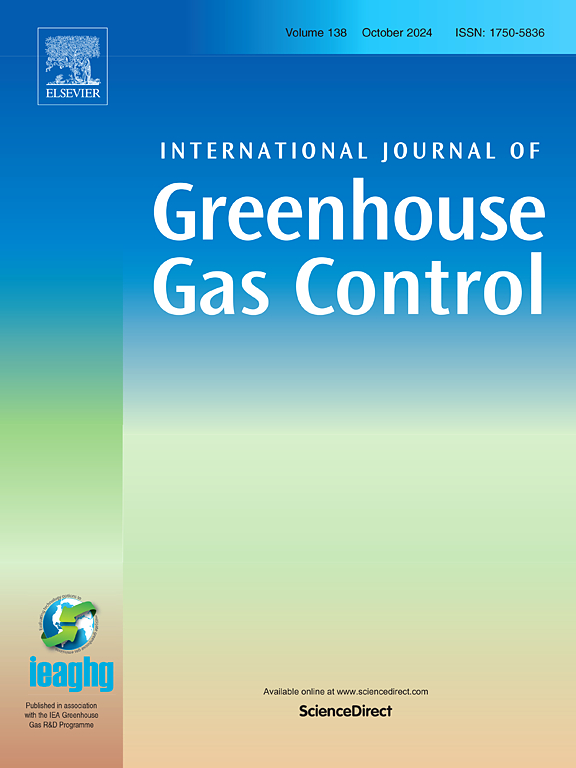CO2 storage in depleted reservoir: Hydrate risk in the near wellbore region an integrated experimental approach using thermodynamics, NMR and X-Ray measurements
IF 4.6
3区 工程技术
Q2 ENERGY & FUELS
International Journal of Greenhouse Gas Control
Pub Date : 2025-02-01
DOI:10.1016/j.ijggc.2024.104298
引用次数: 0
Abstract
Mitigation of global warming & climate change requires a limitation of anthropogenic CO2 content in the atmosphere. One solution to control CO2 increase is geo-sequestration (CGS) into depleted reservoirs. However, the storage resources of a reservoir are heavily linked to the associated wells injectivity, mainly in the near wellbore region. The formation of CO2 hydrates due to CO2 injection, and the associated thermodynamic phenomena, may greatly alter the petrophysical properties of these injection zones. The adiabatic depletion leads to a large temperature decrease which, associated with local “cold” conditions, can bring the system into the CO2 hydrates stability zone in the near wellbore area. If those conditions are encountered, a severe reduction, or even loss, of injectivity can be anticipated. CO2 hydrate can plug partially, or totally, the pore bodies and/or pore throats. Today, only few results are available regarding CO2 hydrates formation in these peculiar depleted near wellbore conditions.
Loss of injectivity due to the hydrate formation risk is addressed in this experimental integrated study; hydrates formation in porous media in static conditions is performed using low field NMR, where hydrate formation in porous media in dynamic conditions is performed by the CAL-X™ experimental set-up.
The first porous rock chosen was a high permeability sandstone. In static conditions, after setting the system to a targeted water saturation (ranging between 10 and 50 %), experiments were conducted in an in-house high-pressure NMR set-up. Taking advantage of the huge relaxation contrast between protons, part of water molecules and hydrates, the average water content can be measured continuously during hydrate formation and dissociation as well as water profiles along the sample. The capability of the Peltier cooled NMR system to accurately control the temperature, allows a good determination of the thermodynamic stability limits. The influence of the water saturation is presented and discussed.
The effect of hydrate formation on the permeability of porous rock is also studied. For this purpose, a series of high-throughput X-Ray monitored coreflood experiments are conducted using state-of-the-art equipment (CAL-X™). Experiments are performed under a constant flow rate of CO2 at different initial water saturations. During CO2 injection, water saturation, as well as hydrate formation/dissociation, are monitored by time-resolved X-Ray radiography. The measurement of the pressure drop across the core sample during hydrate formation is used to evaluate the extent of the permeability change. It is observed that the higher the initial saturation, the greater the alteration of the permeability.
This study also investigates partially the “memory effect”; cycles of hydrate formation, followed by dissociation were performed both on CAL-X™ and NMR set-ups. The produced “memory effect” translates into an accelerated hydrate's nucleation, i.e. a faster onset of hydrates re-formation, and a higher water to hydrate conversion. The produced experimental data intend to validate and parametrize the hydrates models in reservoir modelling software.
求助全文
约1分钟内获得全文
求助全文
来源期刊
CiteScore
9.20
自引率
10.30%
发文量
199
审稿时长
4.8 months
期刊介绍:
The International Journal of Greenhouse Gas Control is a peer reviewed journal focusing on scientific and engineering developments in greenhouse gas control through capture and storage at large stationary emitters in the power sector and in other major resource, manufacturing and production industries. The Journal covers all greenhouse gas emissions within the power and industrial sectors, and comprises both technical and non-technical related literature in one volume. Original research, review and comments papers are included.

 求助内容:
求助内容: 应助结果提醒方式:
应助结果提醒方式:


